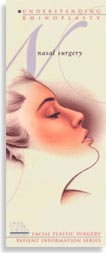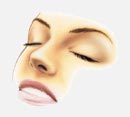| Rhinoplasty Dr. Shepherd G. Pryor, V, MD, F.A.C.S has an excellent reputation for performing Rhinoplasty in Scottsdale, Arizona. One of the top cosmetic procedures in the United States is rhinoplasty. Rhinoplasty is performed to reshape the nose and may profoundly improve patients’ self-confidence and appearance. A rhinoplasty can alter the size, shape, bridge, tip, or nostrils of the nose thus enhancing the face and making the nose more proportionate. The surgery often results in a more balanced facial harmony that focuses attention on the eyes. In addition to improving cosmetic appearance, rhinoplasty may also be performed to improve nasal airflow and breathing. Dr. Pryor has also received the compliments of his peers by receiving referrals from other surgeons to perform complicated revision rhinoplasty in Scottsdale, Arizona. Secondary or tertiary revision procedures are technically difficult but Dr. Pryor welcomes the challenges inherent in this operation. Patient's discouraged by their previous rhinoplasty feel confident that Dr. Pryor can acheive a result that they were hoping for from their original surgery. Depending on the work being performed, rhinoplasty may be performed without external incisions to optimize healing and camoflaouge surgical technique. The incisions for rhinoplasty surgery can be made either inside the nose or in the skin that separates the nostrils. The skin is then lifted from the underlying nasal framework, after which Dr. Pryor sculpts the cartilage and bone into the desired shape. He then closes the incision with fine sutures and applies a splint to maintain the new shape. The after-effects of rhinoplasty surgery are usually limited to minor bruising and swelling around the nose and eyes. Discomfort is generally mild and readily treated with light medication. After one week, Dr. Pryor will remove remaining stitches; most patients can return to work in five to seven days. If you wear eyeglasses, you should not let them rest on the nasal bridge for four to six weeks. Contact lenses are acceptable; we can also show you how to safely adjust your glasses during the healing period. |
Successful facial plastic surgery is a result of good rapport between patient and surgeon. Trust, based on realistic expectations and exacting medical expertise, develops in the consulting stages before surgery. Your surgeon can answer specific questions about your specific needs. |
 |
||||
Is Rhinoplasty For You?
Whether the surgery is desired for functional or cosmetic reasons, your choice of a qualified facial plastic surgeon is of paramount importance. Many facial plastic surgeons are trained in both ear, nose, throat, and facial cosmetic surgery, which provides you, the patient, with the highest level of training and expertise. Your surgeon will examine the structure of your nose, both externally and internally, to evaluate what you can expect from rhinoplasty. You are most likely to be pleased with the results of your surgery if you have a realistic idea of what nasal surgery can and cannot do. You can expect a thorough explanation of the surgeon's expectations and the risks involved in surgery. Following a joint decision by you and your surgeon to proceed with rhinoplasty, the surgeon will take photographs of you and discuss the options available. Your surgeon will explain how the nasal structures, including bone and cartilage, can be sculpted to reshape the nose and indicate how reshaping the chin, for example, could enhance the desired results.
What To Expect After The Surgery | |||||



